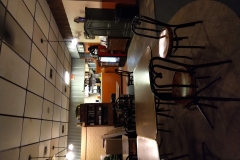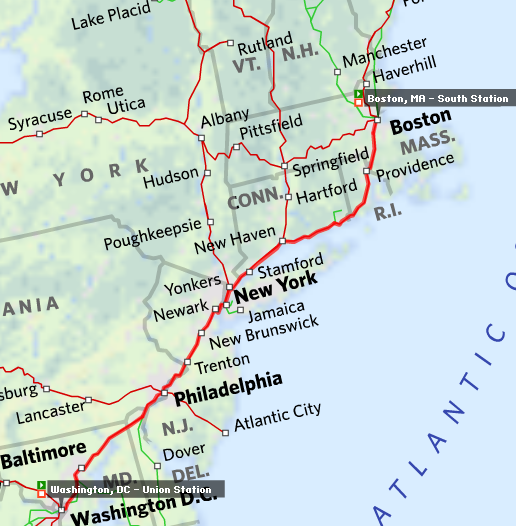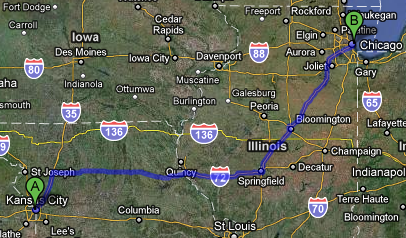





I’ve been a rail fan since I was a kid. My mom often reminds me of when I would jump up and down like an excited puppy at the sight of a diesel locomotive. Despite my enthusiasm for trains, reality cannot be ignored: high speed rails are too expensive to connect this vast country.
High speed rail is defined in the United States as traveling over 110mph. Most Amtrak trains, on well-maintained rails, are currently capable of 90-100mph for short periods of time, but real world performance is affected by freight trains that have priority access, frequent breakdowns, accidents with cars, and poorly maintained rails.
Most of America’s rail network continues to be built and maintained by private freight carriers. Private operators once carried the bulk of passengers between cities until competition from government-subsidized air travel and highway development created competition after World War II. Cars with reasonable levels of reliability, refinement, and affordability made it possible to travel intermediate distances in reasonable time. A drive from St Louis to Kansas City takes 4 hours by car and 5.5 hours by rail, and although traveling by train is easier and more relaxing, the car offers door-to-door service, independence, and freedom.
Costs are comparable as well, with a fee of $26 to take Amtrak from STL to KC and fuel costs of $33 to take a 25mpg car at $3.30 per gallon. Of course, you have to pay to insure and maintain a car, and there’s the safety factor — mass transit of any kind of statistically safer than driving. The addition of a passenger increases the cost of one way rail travel to $52 while the car remains at $33. Drive a 50mpg Honda Civic hatchback like the one I reviewed earlier this month and that $33 fuel cost drops to just over $15.
Most importantly, unless you are traveling to a destination more than 300 miles away, a car is usually more convenient than booking a train or flying.

The northeast is perhaps the only one major region of the United States with the potential to benefit from high speed rail. Amtrak’s Acela contributes to nearly half of Amtrak’s annual revenue, with over a dozen stops between Washington DC and Boston MA. This region of the United States somewhat mirrors western europe with its population density and closely knit network of large cities within a 500-mile span. Certainly, the northeast corridor is a worthy candidate for high speed rail development as the gains in productivity and efficiency would be seen by a large segment of the population.
Now imagine if Kansas City and Chicago (also 500 miles apart) had major population centers like Philadelphia and Baltimore between them rather than corn fields. The per-person cost to build and maintain a modern rail system in middle America would drop significantly, but unless St Louis becomes a top-ten city again or two more major metro areas pop up in the middle of nowhere along I-55, a self-sustaining HSR system is unlikely to happen.

HSR advocates would benefit from leaving their Washington DC cubicles and experiencing America’s vastness at the ground level. Contractors and rail manufacturers like General Electric are salivating over the $53 billion President Obama has pledged, leaving states and municipalities with long-term maintenance costs that, once again, would benefit private industry at the expense of taxpayers.
Despite Vice President Biden’s claim that high speed rail would (and in some regions like the northeast, it certainly could) increase productivity, it simply isn’t true in most cases, which makes it difficult to justify tens of billions of federal dollars for HSR development. Between New York and Los Angeles, for example, a Boeing 747 can carry over 350 passengers in less than five hours. At a generous 120mph, it would take at least an entire day for high speed rail, and that’s not including intermediary stops at each major city in between.
I detest flying, and even with all the breakdowns, delays, and cramped bus rides I’ve had to endure with Amtrak, I still take the train when I can. You get a ground-level view of the world around you without having to remain alert and stare at a piece of pavement, but duplicating the vastness of the Eisenhower Interstate System with railroads is completely unrealistic.
Some supplemental reading:
http://blogs.ajc.com/bob-barr-blog/2011/02/28/the-magic-elixir-of-high-speed-rail/?cxntfid=blogs_bob_barr_blog
http://www.time.com/time/politics/article/0,8599,2047110,00.html
Public transit never pays it’s own way, and it won’t be any different with high speed rail. They point at Japan saying how well it works there, but ignore the fact that the entire country is smaller than the state of California.
The costs are too high to be borne by ticket fares alone, what with maintenance costs and especially insurance costs these days. The true price per ticket would be far too expensive to have people consider it.
For example, the local bus authority in my hometown gets a full .6% of the local 8.7% sales tax. The state sales tax base rate is 6.5%, so 27.2% of our local 2.2% sales tax is being used exclusively to support a (rather poor) bus system alone, much less light rail/high speed rail, and despite this funding they keep reducing the number of routes and buses to cut costs, even after almost doubling the fare prices.
This doesn’t include the cost of the free bus passes handed out by the state to all the mentally ill people on state aid, which makes the bus a very interesting form of transportation to use locally, and the downtown bus station full of crazy people.
There are European countries with excellent mass transit systems but they’re funded by the massive taxes that are levied against their populations.
Unless oil gets much more expensive than it is now (which will also affect the overhead of any public transportation as well) mass transit will always cost more per head per mile to operate than people paying for their own vehicles and supporting the road infrastructure via taxes or tolls.